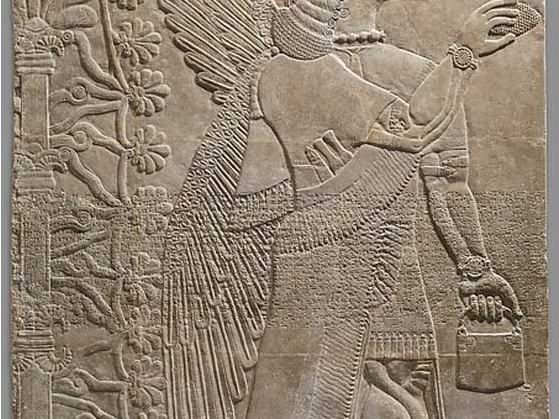Handbags are a fundamental fashion accessory that we take for granted, but they have an interesting history. The average woman in Britain spends some £4,000 on handbags throughout life, with a collection of around 17 at any one time.
Many great and powerful women have spoken of their handbags, including Thatcher and Hilary Clinton, who said; “No one should make fun of anyone else’s handbag choices… handbags are a deep psychological need. It’s a desire to organise and contain that which is important to your daily life.”
So, what is the history of handbags, and are they still evolving today?
The Origins of Handbags
Historically speaking, handbags and purses are closely aligned. Really, handbags are just a larger form of purse, and both are designed to be carried by hands or close to one’s body.
Purses are found in many ancient cultures, including Ancient Egypt, where men are frequently depicted with small bags tied to their waist.

The oldest purse was discovered in Germany in 2012. The stoneage-like purse was studded with hundreds of dog teeth and was dated from between 2,500 and 2,200 B.C, making it over 4,000 years old.
Most ancient civilisations had some form of carry bag which could be called a handbag. So what even defines a handbag
The factor that differentiates a handbag from a conventional bag is probably the fact it’s designed for fashion as well as practicality. Handbags are adorned with decorations; they’re made with fashion and design in mind, in addition to carrying items for practical reasons.
In the 15th-century, Da Vinci designed an elaborate bag around the same time he was painted The Last Supper. It was brought to life in 2012 by the Italian fashion label Gherardini. Bags around this time were mainly to be carried by men, who held the purse strings at the time.
From Purses to Handbags
Historically, handbags very much a male or unisex item designed for carrying items, and it wasn’t until the 17th and 18th-centuries that the handbag developed in the feminine sense. Around then, both men and women had pockets, though women’s pockets were generally separate from the garment itself.
Women allegedly started increasing their pocket size to make them stand out against their large, ruffled garments. Also, large pockets became an unsavoury sight as the dresses and gowns themselves became more sleek and minimalist, making it more desirable for women to carry their possessions separately, in a bag.

In the 17th-century, women were also routinely taught sewing and embroidery, and so they began to decorate their clothes as the world of fashion continued to develop in Europe.
European styles became far more ornate during the 18th-century, leading a whole host of Elizabethan designs that were embezzled with all manner of patterns and designs. In addition, increasing travel meant different styles were being exported from around the world, inspiring European fashion with new exotic designs inspired by the colonies.
Around then, small drawstring bags called reticles became popular in France. They were made of fine fabrics like silk and velvet and were equipped with wrist straps. These bags became synonymous with women’s fashion and were nicknamed "indispensables."
Something else important happened around then - men stopped using handbags. Handbags transitioned from distinctly unisex - with men often carrying large, elaborate handbags - to distinctly feminine. Instead, men started to use their pockets, with the plainer briefcase following shortly.
Handbags For Travel
Handbags continued to develop with other forms of luggage. Louis Vuitton’s famous luggage became popular amongst the rich in the 19th-century, when entrepreneur Samuel Parkinson stirred up demand for luggage available in sets, designed to withstand the rigours of train travel. In fact, luggage at the time was incredibly fashionable and many modern fashion designers, including Louis Vuitton, have their roots in luggage design.

Late 19th-Century: Handbag Design Progresses
In the late 19th-century, women became more free and independent, at least in the emerging middle-classes and upper classes. Queen Victoria inspired female fashion, and accessories such as jewellery became more widely owned, ornate and adventurous in design.
The Regency and Victorian era saw a great development in the arts and culture, and the British Empire began to reach its peak.
H.J. Cave produced what would probably be considered the first line of luxury handbags in the late 19th-century.
20th-Century: A Cambrian Explosion in Design
The popular arts really took off throughout the 20th-century. Women were more brazen about showing off their possessions in public and the handbag became less discreet, and was used increasingly to make a fashion statement. However, bags were still largely seen as unfeminine - they were large, unwieldy. This changed in the 20th-century as bags became idealised as feminine in mainstream culture.
In WW2, bags became hold-alls as we know them today. Women needed to conceal bulky possessions - including gas masks. Vogue confirmed this, saying in 1943: “Big bags are best; they suit our mood for being self-sufficient.” Next, Hermes and other large fashion houses began crafting fashion bags for film stars including Audrey Hepburn, and finally, the handbag was immortalised as perhaps the most influential feminine fashion accessory.
After WW2, youth culture took off and women were more truly liberated than ever. Handbags became fashion and art statements, and designs became more inventive, weird and wacky.
Handbags Today
While handbags are certainly a feminine accessory, men are embracing different forms of bags that are classed as handbags, including the ‘man bags’ of the 21st-century. In addition, handbags are more unisex than ever, with many brands releasing lines aimed at men or other genders.
In terms of design, the sky's the limit. It’s also now possible to find high-quality, well-made and stylish handbags for excellent prices. Fashion has diversified and people’s wardrobes mix Louis Vuitton and Chanel with high street fashion.

As we progress into the 21st-century, the handbag continues to dominate among other women’s fashion accessories.
Their illustrious history is another thread of the interesting interwoven fabric that is the history of fashion.